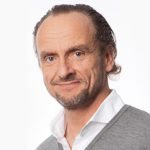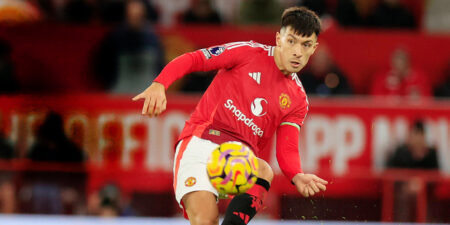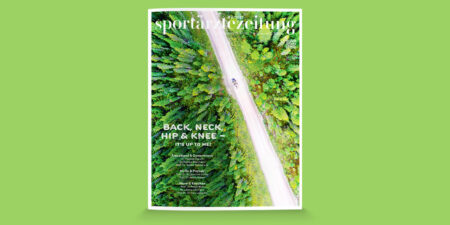Orthobiological methods have been used in professional sports for years and the trend is growing. Muscular, tendinous and even degenerative disorders are already being treated in many different types of sports with platelet rich plasma (PRP), the blood cell secretome (BCS), and, in rare cases, with cells aspirated from bone marrow biopsies or stem cells derived from endogenous adipose tissue.
The industry supplies various products and systems as can be seen in Table 1.

Some of the products such as PRP or BCS/Orthokine are simple to produce and practical to administer in a sports medicine specialist’s everyday practice. They both act by virtue of their contents, particularly the interleukin 1 receptor antagonists, but also diverse so-called growth factors during the proliferative phase of healing after injuries (Fig. 1). Unfortunately, very different products with regard to their contents are subsumed under the term PRP. This makes it difficult to conduct generally valid level 1 studies. Thus no recommendations have yet been made for PRP due to the stringent criteria of the guidelines committee. However, it has been acknowledged that there are already powerful study results that clearly point to a significant effect that is possibly better than that achieved with hyaluronic acid.

These regenerative methods are no longer a rarity in statutory health and private healthcare in Germany either. And this is most likely also justifiable. In the meantime, the data on file for PRP are very good, at least for its use in osteoarthritis of the knee, but also for, e.g., epicondylitis. In fact, it is so good for osteoarthritis of the knee that the European Society of Sports Traumatology, Knee Surgery & Arthroscopy (ESSKA) has recommended using PRP for osteoarthritis as, for instance, Mandelbaum (FIFA Excellence Center St. Monica USA) reported at this year’s Isokinetic Conference in Lyon (Fig. 2), (see also the article by Prof. Tischer on page 28 of this issue).

FIG. 2 modified Bert Mandelbaum
More recent studies have also been published for hyaluronic acid that have proved its efficacy particularly in osteoarthritis of the knee, but also for certain disorders of tendinous tissue such as Achilles tendinopathy in combination with radial shockwave therapy or for disorders of the rotator cuff (M. Khan Sports Health 2/22). However, hyaluronic acid is not an active regenerative substance in the strictest sense. Nevertheless, it does exert a protective effect by reducing prostaglandin E2 and metalloproteinases that have negative effects on the integrity of the articular cartilage matrix. Hyaluronic acid can also be interesting, especially in combination with actively regenerative blood products. The combination of the two different modes of action could help in the fight against osteoarthritis of the knee. Due to the very good study data now on file regarding its efficacy, hyaluronic acid has been included for the first time in the new guidelines for osteoarthritis of the knee. It is recommended for those cases when other therapeutic measures such as dietary counselling and physical exercises do not have an adequate effect.
DOCTOR’S OBLIGATIONS & MULTIMODAL THERAPY CONCEPT
However, the emancipation of these therapeutic measures in the field of orthobiology imposes obligations on attending physicians in Germany. Paragraph 630e, German Civil Code (BGB) states: ”..Alternatives to the measure must also be referred to in the briefing if several equally medically indicated, customary methods may lead to significantly different strains, risks or chances of recovery“. This means that, in future, the doctor providing the information will be well advised to talk about Orthokine, PRP and hyaluronic acid at least when making a diagnosis of osteoarthritis of the knee joint. According to the opinion of experts and in compliance with the guidelines, the use of these orthobiological therapies is only sensible and successful when embedded in a multimodal therapy concept. In this case this especially means optimisation of the biomechanical parameters with medicinal products and medical devices as well as educative approaches such as, and in particular, nutritional counselling. Besides the development of special scaffolds, the further development of blood products rich in growth factors and the harvesting of pluripotent stem cells also play a major role in reconstructive surgical procedures for degenerative disorders. Brunella Grigolo (SSD Laboratory RAMSES, Rizzoli Orthopaedic Institute, Bologna) sees this development as an ”important turning point in the clinical treatment of numerous disorders of the musculoskeletal system“.
Against the background of the current study data and the assessment by the FDA, Bert Mandelbaum (Department of Orthopaedic Surgery Cedars, Sinai; FIFA medical center of excellence, Los Angeles) sees the various orthobio-
logical regenerative methods within the context of a traffic light system (Fig. 3). He already recommends a few methods (green) for use in top athletes with acute injuries and for standard care in selected indications.

Fig. 3 Orthobiologics 2022, modified Bert Mandelbaum 6/2022
SUMMARY
Regenerative medicine has sparked great expectations. The orthobiologics developed to date can shorten recovery times, particularly in athletes, which brings considerable competitive advantages in professional sports. Moreover, it has also become established in standard surgical and conservative care by merit of a few products. Hyaluronic acid and PRP in particular must be considered when deciding on treatment for a number of indications. It is important to treat these new treatment options – whose mercantile aspects should be of secondary importance – seriously to avoid moving these methods unnecessarily into the critical focus of the funding agencies. The further development of ”point of care“ harvesting of stem cells and their combined use with growth factors promises to be exciting. Perhaps in the foreseeable future surgical and conservative methods will really be able to combine to heal tissue that to date has been considered unable to regenerate. Still just hope, but soon reality?
Autoren
ist Facharzt für Orthopädie und Inhaber einer orthopädischen Praxis mit Schwerpunkt Sport-Orthopädie in Münster. Außerdem ist er Vereinsarzt des SC Preußen Münster, Mannschaftsarzt der U16 DFB-Nationalmannschaft und wiss. Beirat der sportärztezeitung.




